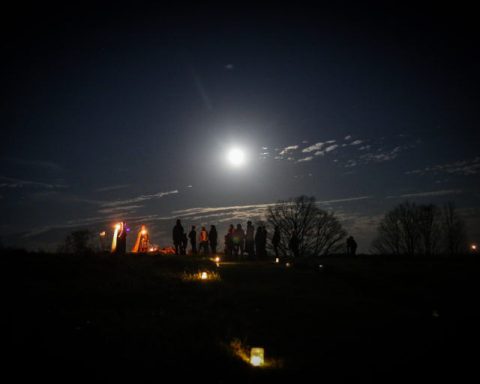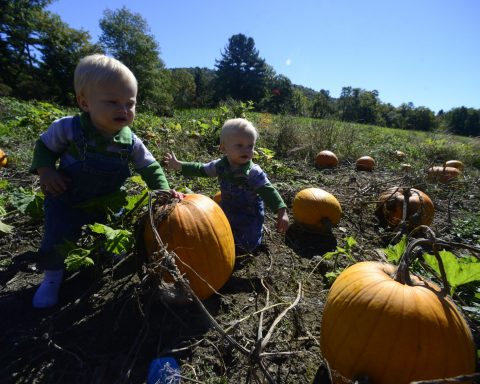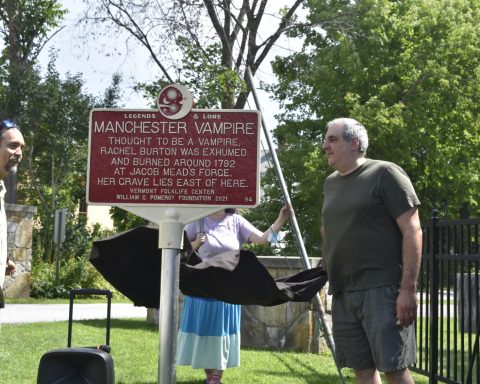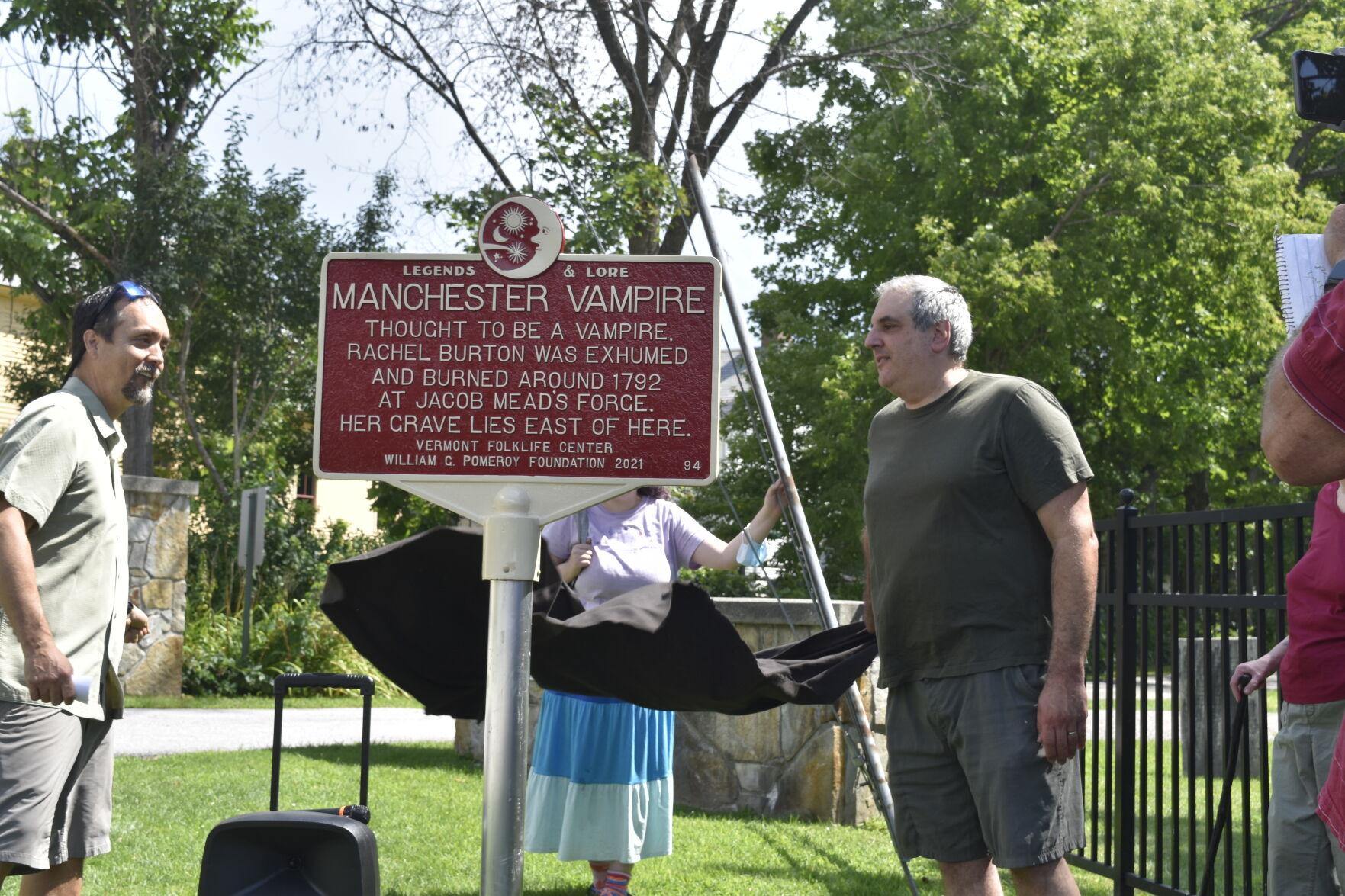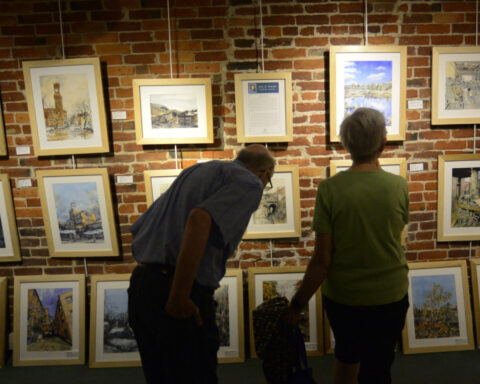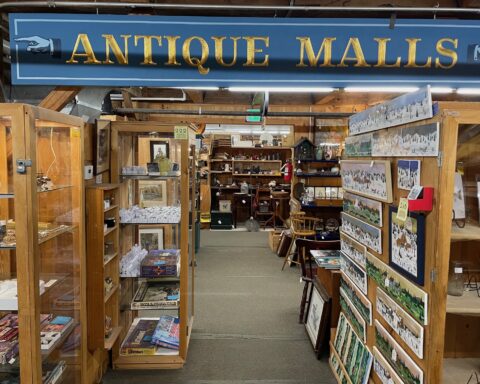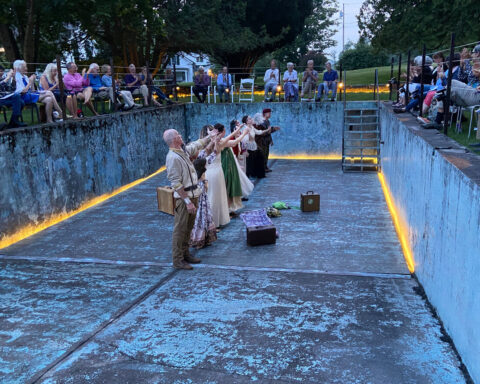By Jim Therrien
Vermont Country
WOODFORD — Ghost towns in the Old West are depicted with sun-bleached wooden storefronts, saloon doors creaking in the wind and tumbleweed rolling down deserted streets.
But that wasn’t the case in New England when early settlements were abandoned. Here, the forest simply grew up and reclaimed all but the painstakingly constructed stone walls, the cellar holes and the graveyards.
OVERGROWN
Such was the fate of an early 1800s cluster of homes about a mile up a mountainside trail that heads north from Route 9, just past the Bennington line in Woodford.
“It was a place where my family would go picnic back in the day, and it was quite a lot more clear up there then,” said Donald Campbell, who lives on nearby Furnace Grove Road on the Bennington side and often hikes up to the site. “It’s all grown-up forest now.”
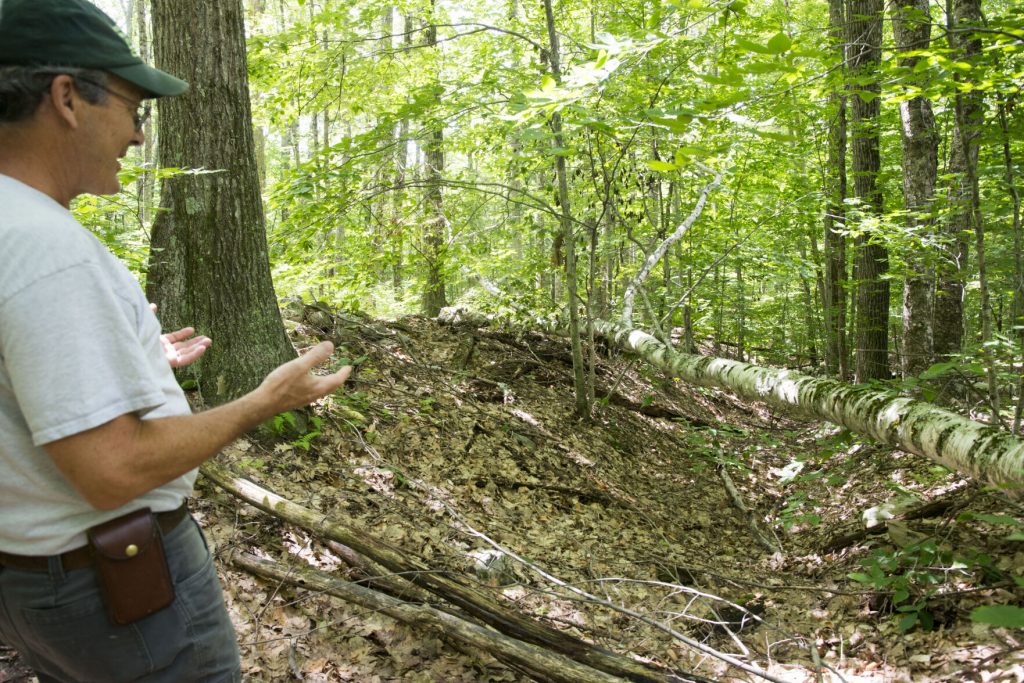
The former Select Board member said his great-great-grandparents, who lived in Troy, N.Y., and summered in Bennington, purchased their property in the 1850s from an iron smelting company that had gone bankrupt.
“They would go on these family walks, and one of the favorite ones was the walk up to the cemetery and old settlement,” he said. “So it has always been part of the backdrop of living in Bennington for me.”
Campbell added, “When the settlement was there, it was all cleared land — you can tell by the stone walls. It was probably [cleared for] sheep, and those walls are evidence of the early settlement period. It didn’t last too long.”
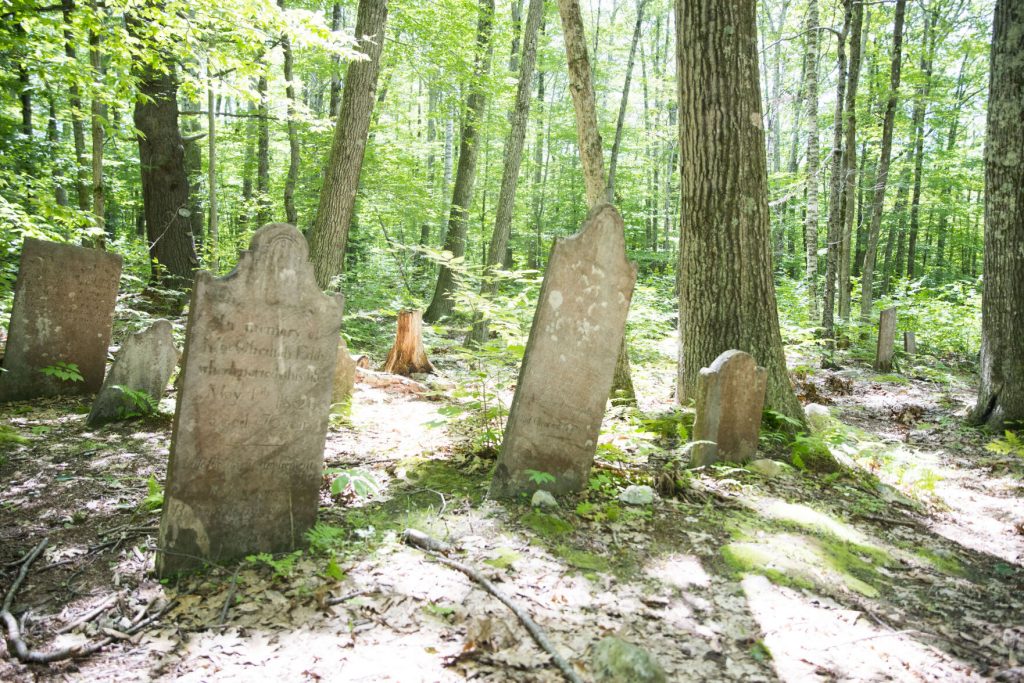
BYPASSED
One reason the settlement was abandoned involved construction of a new roadway from Bennington to Woodford, replacing one higher on the ridge that passed close to the settlement.
Such a bypassing was a common experience for any number of American communities over the years, whenever a railroad line, a new larger highway, a canal, an airport or similar project literally left a once-flourishing community behind.
Another reason was the decline of iron ore smelting in Bennington during the early 19th century. Previously, furnaces blazed away in the Furnace Grove area — from which Campbell’s road takes its name.
Iron smelting in the area also employed hundreds of workers at one time, many living in quarters provided by the iron works.
“It was a short-lived settlement, then forest started to grow back up,” Campbell said.
WILDERNESS
“I think the bigger story is that it is now all part of this large block of Forest Service wilderness,” said Campbell, “and that it is available to Bennington as part of our outdoor recreational opportunities as we brand ourselves more and more as ‘Vermont Begins Here.’ … It’s great, being a park for everyone, a wilderness for everybody.”
Campbell’s interest in parks and land preservation extends to his job: He’s the regional project director for the Vermont Land Trust.
The hiking trail today continues past the settlement site to Woodford Hollow, while a spur trail takes one to the top of Bald Mountain.
After the settlement’s decline, a lumber company owned the land, and it was eventually was sold to the U.S. Forest Service to become part of the Green Mountain National Forest.
HISTORIC CEMETERY
According to a 2015 report on the burial ground, known as the Waters Hill Cemetery, author Sally Krizan Eaton writes that a 1940 survey found there were at least 35 graves at the overgrown site, dating from 1794 to 1861.
Some of the surnames are Bickford, Cotton, Eddy, Harris, Knapp, Lyon, Taft, Temple and Wood.
Those include Nathan Taft, a distantly related ancestor of President William Howard Taft, and the two wives of decorated Revolutionary War veteran Ebenezer Temple.
Temple was born in eastern Massachusetts and served through the entire war, before living the final 40 years of his life in Woodford and dying at 90 in 1847.
FAMOUS BATTLES
Eaton wrote that Temple was among those rescued by Gen. Benedict Arnold’s troops during the British siege of Fort Stanwix in western New York in August 1777.
That was part of the fighting associated with the campaign of British Gen. John Burgoyne, which also included the Battle of Bennington that August and the Battle of Saratoga in October 1777, where Burgoyne surrendered his entire army to the Americans.
But Temple’s military career wasn’t finished. He went on to participate in the siege of Yorktown, Va., in October 1871, where the British army of Gen. Charles Cornwallis became trapped and surrendered to American and French forces, effectively ending British attempts to quell the rebellion.
Eaton said no headstone for Temple was found in the Woodford cemetery, but it’s likely he was buried there with his family members.
A copy of Eaton’s report is preserved in the Bennington Museum library.
Jim Therrien — reports for the three Vermont News Media newspapers in Southern Vermont. He previously worked as a reporter and editor at The Berkshire Eagle, the Bennington Banner, The Springfield Republican and the former North Adams Transcript.

